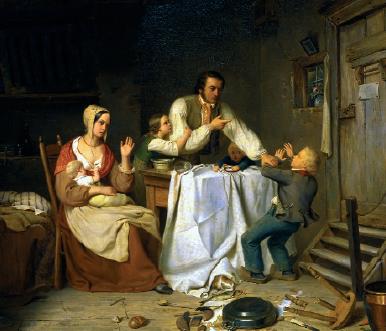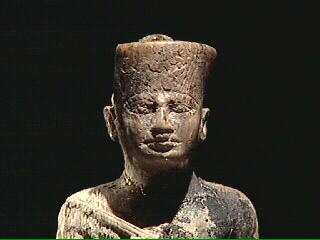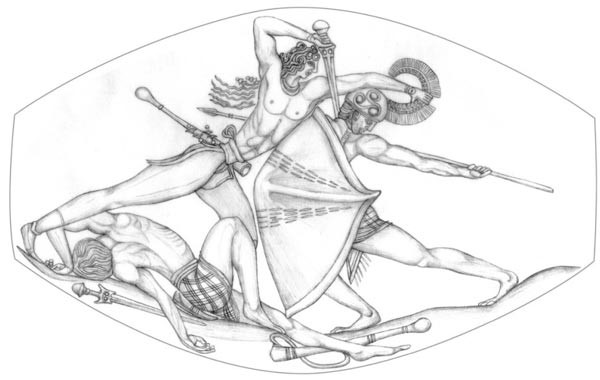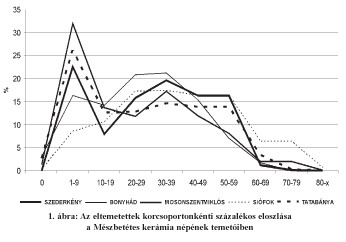Bronze Age embodied: new series of our research group
Momentum Mobility Research Group focuses directly on Bronze Age people. Like other teams of the Research Centre for the Humanities, granted by the Momentum Programme of the Hungarian Academy of Sciences, we try to explore as much information as possible about men and women and the society of the period under study. E.g. the Momentum “Integrating Families” Research Group reports on stepfamilies and children, orphans and widows living two hundred years ago, based on contemporary records and documents.

Display of domestic violence (illustration from the History of Everyday Life Blog)
It is challenging to investigate four thousand year-old Bronze Age communities from a similar perspective. People who lived between 2500-1500 BC loved each other, lived together, and gave birth to children just as we do. We know that before the age of antibiotics and modern medicine, mortality was much higher and far more children died before they reached adulthood during the 19th century, the Middle Ages, or millennia earlier than today. However, birth or marriage records of Bronze Age inhabitants of present-day Hungary are not available. We do not have any written sources at all, opposite to the Trojan heroes living slightly later, whose history was recorded by Homer. Paintings or sculptures have not survived of them either, like the ones of the Egyptian pharaohs of the same period, such as Cheops, the builder of the Great Pyramid of Giza.

Statue of Pharaoh Cheops (c. 2589-2566 BC)
Human remains, fortunately, provide a huge source of information for archeology, and with the help of new bioarchaeological analytical methods, we can learn more and more from bones and teeth about the living conditions and nutrition of the period under study. For example, a pelvic bone can be used to determine if the female individual, lived many hundreds or thousands of years earlier, has given birth during her lifetime (Rebay-Salisbury et al. 2018). Effects on different parts of the body, like repetitive activities (e.g. horse riding) also leave traces on the bones at the muscle origins. Based on this, the lifestyle of men and women, or the issue of labor division can be examined (Eshed et al. 2004; Porčić, M., Stevanović 2009).

Major activities of men and women in Natufian and Neolithic Levant (Eshed et al. 2004)
It can be concluded, based on the Bronze Age skeletons examined so far, that women performed a variety of different work activites using both hands, but men have already developed right-handedness, which may be related to the swordmanship that already appeared in the Bronze Age (Macintosh et al. 2014; Davis, Stocker 2016; Hermann et al. 2020).

Swordmanship scene on a sealstone of a ring from the tomb of the Griffin Warrior, Pylos, Greece, dated to 1500-1420 BC (Figure: UC Magazine)
Anthropological studies of the Middle Bronze Age burials in Transdanubia show that child mortality rate was 20-30%, but in several cases it may have been even higher (Hajdu 2010; Mali 2014; Zoffmann 2015; Csányi 2016, 110).

Distribution of the deceased by age in the Middle Bronze Age cremation cemeteries in western Hungary (Zoffmann 2015)
With the help of strontium isotope analysis of teeth, migration of people can be mapped: we can find out whether the investigated person of a cemetery was born locally or migrated to the area from elsewhere. Bioarchaeological methods can bring us closer to understanding the mobility of once-lived communities and the family relationships of individuals.
In our new series, we attempt to summarize the details of the life and death of a Bronze Age individual who lived in today’s Hungary four thousand years ago, similar to other well studied prehistoric people, like Ötzi from the Alpine Copper Age. Individual life stories may reveal hitherto unknown details of Bronze Age society.

Ötzi’s mummy preserved by ice in the Southeastern Alpine mountains provided huge amount of information about his life and death (credit: South Tyrol Museum of Archaeology)
References
Csányi M.: Amiről a sírleletek szólnak. A társadalmi rétegződés jelei a jánoshidai késő bronzkori temetőben – What the grave goods talking about. Traces of Siocial Stratification in a Late Bronze A Cemetery at Jánoshida. Tisicum XXV (2016) 109-119.
Davis, J.L., Stocker, S.R.: The Lord of the Rings: The Griffin Warrior of Pylos. Hesperia 85 (2016) 627–655.
Dragomán Gy.: Lana. Nők Lapja 2017. június 28.
Eshed, V., Gopher, A., Galili, E., Hershkovizt, I.: Musculoskeletal stress markers in Natufian hunter‐gatherers and Neolithic farmers in the Levant: The upper limb. American Journal of Physical Anthropology 123 (2004) 303–315.
Fónagy Z.: „Özvegysors a 19. században”. Nők Lapja 2020. február 5.
Hajdu, T.: A bronzkori Dunántúli mészbetétes edények népe kultúrájának bonyhádi temetője feltárása és az embertani leletek vizsgálata során alkalmazott módszerek tanulságai – Freilegung der Kultur des Volkes der inkrustierten Gefässe im Bonyháder Friedhof aus der transdanubischen Bronzezeit sowie Lehren der bei der Prüfung der Anthropologischen Funde angewandten Methoden. Wosinsky Mór Múzeum Évkönyve 32 (2010) 129–139.
Hermann, R., Dolfini, A., Crellin, R.J., Wang, Q., Uckelmann, M.: Bronze Swordmanship: New Insights from Experiments and Wear Analysis. Journal of Archaeological Method and Theory 2020 https://doi.org/10.1007/s10816-020-09451-0
Macintosh, A., Pinhasi, R., Stock, J. T.: Divergence in male and female manipulative behaviors with the intensification of metallurgy in Central Europe. PloS ONE 9 (2014) e112116.
Mali P.: Biatorbágy–Szarvasugrás középső bronzkori temetője. In: Rajna A. (Szerk.): Múltunk a föld alatt Újabb régészeti kutatások Pest megyében – Our Past under the Earth Recent Archaeological Investigations In Pest County. Szentendre 2014, 23–49.
Rebay-Salisbury, K., D. Pany-Kucera, M. Spannagl-Steiner, F. Kanz, P. Galeta, M. Teschler-Nicola, and R. B. Salisbury. 2018. Motherhood at early Bronze Age Unterhautzenthal, Lower Austria. Archaeologia Austriaca 102 (2018) 71–134.
Porčić, M., Stevanović, S.: Physical activity and social status in Early Bronze Age society: The Mokrin necropolis. Journal of Anthropological Archaeology 28 (2009) 259–273.
Zoffmann Zs.: A Mészbetétes kerámia népességének embertani leletei Szederkény és Versend lelőhelyekről. Janus Pannonius Múzeum Évkönyve 53 (2015) 39–56.








